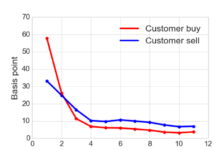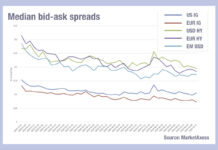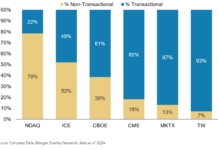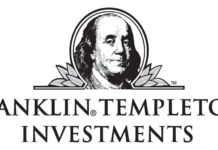“We are about to see how changes in global market structure and regulation that started to play out in 2022 will impact markets in 2023 and beyond,” says Kevin McPartland, head of research in the Coalition Greenwich Market Structure & Technology group.
In a report released today, Coalition Greenwich examines some of the biggest market structure trends it believes should be watched in the year ahead. The Top Market Structure Trends to Watch in 2023 include:
- The search for the next tail risk
“The last three years have left us feeling that black swan events aren’t all that rare anymore… Whether in search of the next big short or simply to manage risk, interest rates rocketing higher alongside depressed risk markets have left market participants worrying about everything from private credit to crypto to consumer lending to housing. Markets simply going down in value does not mean that those markets will fail. As such, these and other market subsegments might ultimately prove resilient after a decade of new regulations. But keeping watchful eyes on these trends and others remains prudent.”
- Capital as the most important commodity
“While 2022 came with its share of liquidity concerns and systemic scares related to margin calls and collateral management the common denominator was capital … In the coming months, we’ll be keeping an eye not only on proposed regulatory changes related to capital and collateral, but also the technology and processes used by market participants to make their capital go as far as it can while still maintaining the same (or greater) level of risk management.
- Electronic bond trading’s “What’s next”
“Electronic bond trading had an exceptional 2022 (and 2020, and 2021, for that matter). But with e-trading levels relatively flat (40% of investment-grade bonds now trade electronically) in the second half of 2022, the bond market has begun looking for its ‘what’s next.’ The Holy Grail of bond e-trading remains the block trade. We certainly see more electronic trades over $2 million in size today than we ever have. But the biggest of institutional blocks ($5 million and up) continue to happen bilaterally. Furthermore, the average trade size market-wide has actually declined in recent months, as markets moved more electronic and retail demand jumped alongside yields. That said, trading via direct pricing streams, session-based trading, new tools that allow dealers to find liquidity in their networks, and all-to-all liquidity will all play a big role in the market’s next step forward.
- Progress in equity market structure reform
“While we can’t with a straight face predict the outcome of the recently-released SEC proposals in 2023, it feels increasingly clear that the most significant reforms are coming to equity market structure since Reg NMS. Protecting the retail investor will remain front and center, but regulators will need to spend more time on cost/benefit analysis to ensure the incremental improvements are worth the money required to get us there.”
- Making traditional assets crypto-native
“Large institutions like UBS have launched digital bonds that are publicly traded/settled on both blockchain-based and traditional platforms and exchanges. The European Investment Bank (EIB), SBI and other traditional financial institutions have also dabbled in crypto-native bond issuance. And despite ASX abandoning the distributed-ledger-based Chess replacement, we see more use cases taking off, particularly in Europe, where the sandbox is a bit friendlier for experimentation.”
- Outsourcing more than just trading
“The talent gap is not exclusive to traders, and certainly not the only one outsourceable to third-party providers. There are few brokers and asset managers who currently have the time and resources needed to focus on designing, building and maintaining their own algo technology stacks, and fewer still who will have those resources in the future. The increasingly vital ancillary functions of quant researchers, algo developers and strategists, FIX specialists, market data technicians, data scientists, software engineers, and others are already beginning their own evolution from in-house to outsourced. We see this trend continuing as the concept gains acceptance across the industry.”
©Markets Media Europe, 2022
<a href=”#top”>TOP OF PAGE</a>

























